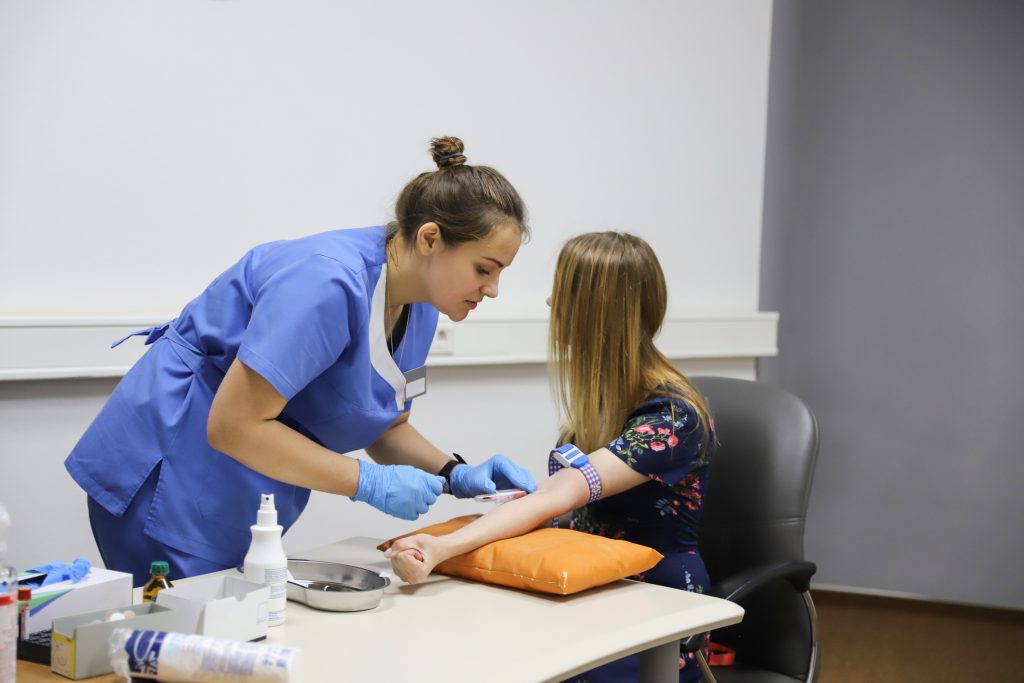How Northeast Medical Institute - New Haven Campus Phlebotomy Course & Cna Class can Save You Time, Stress, and Money.
Wiki Article
Some Ideas on Northeast Medical Institute - New Haven Campus Phlebotomy Course & Cna Class You Need To Know
Table of ContentsSome Of Northeast Medical Institute - New Haven Campus Phlebotomy Course & Cna ClassNot known Details About Northeast Medical Institute - New Haven Campus Phlebotomy Course & Cna Class An Unbiased View of Northeast Medical Institute - New Haven Campus Phlebotomy Course & Cna ClassFacts About Northeast Medical Institute - New Haven Campus Phlebotomy Course & Cna Class RevealedNortheast Medical Institute - New Haven Campus Phlebotomy Course & Cna Class for DummiesNortheast Medical Institute - New Haven Campus Phlebotomy Course & Cna Class Can Be Fun For Anyone
The use of such devices ought to be gone along with by various other infection avoidance and control methods, and training in their usage.For setups with low sources, price is a driving consider procurement of safety-engineered tools - CNA Classes. Where safety-engineered gadgets are not readily available, skilled usage of a needle and syringe is acceptable. Unintentional direct exposure and certain information concerning an event ought to be videotaped in a register. Assistance services need to be advertised for those that go through unexpected exposure.
labelling); transportation conditions; analysis of outcomes for scientific management. In an outpatient division or center, offer a dedicated phlebotomy workstation containing: a clean surface with two chairs (one for the phlebotomist and the other for the individual); a hand clean basin with soap, running water and paper towels; alcohol hand rub. In the blood-sampling room for an outpatient department or facility, offer a comfy reclining sofa with an arm remainder.
Northeast Medical Institute - New Haven Campus Phlebotomy Course & Cna Class for Dummies
Ensure that the signs for blood tasting are plainly specified, either in a created method or in recorded instructions (e.g. in a laboratory kind). In all times, follow the techniques for infection avoidance and control provided in Table 2.2. Infection prevention and control methods. Accumulate all the tools required for the procedure and location it within safe and simple reach on a tray or trolley, ensuring that all the products are plainly visible.Present on your own to the patient, and ask the individual to specify their full name. Examine that the laboratory form matches the client's identity (i.e. match the client's details with the lab kind, to guarantee exact identification).
Make the client comfortable in a supine placement (preferably). Area a tidy paper or towel under the individual's arm. Talk about the examination to be done (see Annex F) and get verbal permission. The patient has a right to refuse an examination at any moment before the blood sampling, so it is necessary to ensure that the patient has understood the treatment.
10 Easy Facts About Northeast Medical Institute - New Haven Campus Phlebotomy Course & Cna Class Described
Extend the person's arm and check the antecubital fossa or lower arm. Situate a blood vessel of a good dimension that shows up, straight and clear. The diagram in Area 2.3, shows typical settings of the vessels, yet several variations are possible. The average cubital blood vessel lies between muscles and is typically one of the most simple to penetrate.DO NOT insert the needle where blood vessels are drawing away, since this boosts the chance of a haematoma. The vein ought to show up without applying the tourniquet. Situating the vein will help in figuring out the appropriate dimension of needle. Apply the tourniquet about 45 finger sizes above the venepuncture site and re-examine the capillary.
Specimens from central lines lug a danger of contamination or erroneous research laboratory examination outcomes. It is acceptable, yet not ideal, to attract blood specimens when initial introducing an in-dwelling venous tool, before connecting the cannula to the intravenous liquids.
Top Guidelines Of Northeast Medical Institute - New Haven Campus Phlebotomy Course & Cna Class
Failure to enable sufficient get in touch with time boosts the threat of contamination. DO NOT touch the cleaned site; in specific, DO NOT position a finger over the capillary to lead the shaft of the exposed needle.Ask the individual to develop a clenched fist so the capillaries are much more prominent. Get in the blood vessel swiftly at a 30 degree angle or much less, and proceed to introduce blog the needle along the blood vessel at the most convenient angle of access - Phlebotomy Courses. When enough blood has actually been collected, launch the tourniquet prior to withdrawing the needle
Facts About Northeast Medical Institute - New Haven Campus Phlebotomy Course & Cna Class Uncovered
Take out the needle gently and use gentle stress to the website with a clean gauze or completely dry cotton-wool sphere. Ask the individual to hold the gauze or cotton woollen in location, with the arm expanded and increased. Ask the patient NOT to flex the arm, since doing so creates a haematoma.
The Facts About Northeast Medical Institute - New Haven Campus Phlebotomy Course & Cna Class Uncovered
Do not push the syringe bettor because extra pressure enhances the risk of haemolysis. Where possible, keep the tubes in a shelf and relocate the shelf towards you. Infuse downwards right into the suitable coloured stopper. DO NOT get rid of the stopper because it will release the vacuum cleaner. If the example tube does not have a rubber stopper, inject very gradually right into the tube as lessening the pressure and velocity used to move the specimen reduces the risk of haemolysis.
Report this wiki page